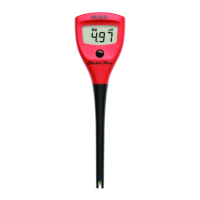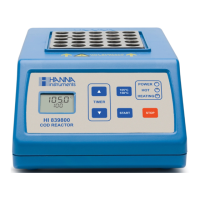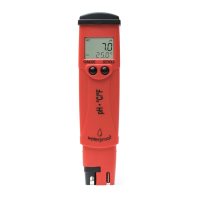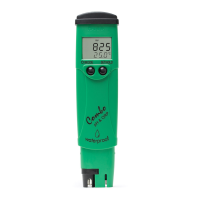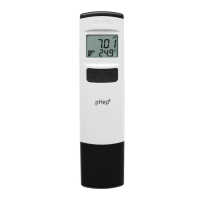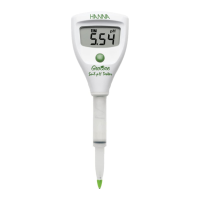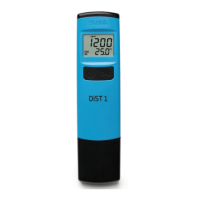12
TITRATION THEORY
alcohol, dimethylformamide, isopropanol and pyridine have been found to work well for acid-base
titrations of strong, medium and weak acids/bases. Titrants include alcoholic potassium hydroxide
and various sodium or potassium alkoxides in a 10:1 mixture of benzene/methanol. The best
titrants are quaternary ammonium hydroxides (such as tetrabutylammonium hydroxide) due to
good solubility of tetraalkylammonium salts of the titrated acids and the clean potentiometric
titration curve obtained (see Figure 7).
Titration of Bases
Weak bases with pK
b
’s up to about 11, which do not ionize with water, can be titrated in
non-aqueous solvents. These bases include aliphatic and aromatic amines, basic nitrogen
heterocycles, alkali metal and amine salts of acids, and many other organic basic compounds.
Titrating a weak base with a strong acid titrant requires a basic solvent that is as weak as possible.
Water and alcohols allow the titration of medium strength bases such as aliphatic amines (pK
b
= 4 to 5), but not the titration of weaker bases such as pyridine (pK
b
= 8.8). Glacial acetic acid
works well for weak bases and has been used extensively. Less basic solvents such as acetone,
acetonitrile, and nitromethane extend the range of titrable compounds.
The endpoint for non-aqueous titrations are usually determined potentiometrically using a pH
glass electrode, a modified calomel or double junction reference electrode with a low-flow rate
reference junction. Good potentiometric titration curves are obtained in most solvents, except
those with very low dielectric constants such as benzene, chloroform and others, when high
electrical resistance of the solvent causes unstable potentials.
2.2.6 Precipitation Titrations
Precipitation titrations allow for faster analysis compared to the old gravimetric analysis, where
a precipitate is formed, filtered, dried and weighed to analyze a compound. Typically silver halides,
silver thiocyanate and a few mercury, lead, and zinc salts are titrated using this method. The
chemical reactions must form an insoluble salt and precipitate out quickly in order to be analyzed
by this method. When the reaction is not quick, a back titration can be used. A measured excess
of the precipitating reagent (titrant) is added to force the reaction to occur, and then unreacted
titrant is then titrated with a standard solution of another reagent.
2.2.7 Redox Titrations
There are a number of oxidation-reduction reactions that can be used to determine unknown
concentration by titration. If the reaction goes to completion, is fast and has an analytical signal
available to follow it, a titration can be performed. The term “fast” means that each addition of
titrant is reacted completely and the sensing electrode is able to detect the change in solution in
less than one second.
Redox titrations are potentiometric titrations where the mV signal from a combination ORP (redox)
electrode (usually with a platinum indicator electrode) is used to follow the reaction of oxidant/
reductant. The electrode potential is determined by the Nernst equation and is controlled by the
oxidant reductant ratio.
Visual indicators such as Ferrion are also available. The oxidized and reduced form of the
indicator will have different colors and can be used to determine the end point.
Various reductants can be determined by titrants with oxidants such as potassium permanganate,
potassium chromate or iodine. Commonly used reductants that are used as titrants include sodium
thiosulfate, and ferrous ammonium sulfate.
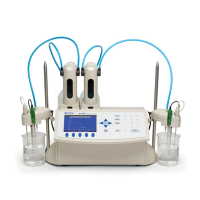
